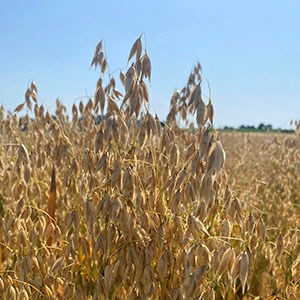Oat is a strategic crop for both Swedish agriculture and the food industry. Increases in temperature and changes in rainfall patterns associated with climate change, leading to increases in events such as drought and heat stress, will result in considerable reductions in oat production and nutritional quality.
Early summer drought stress is one of the major challenges for oats in the field. However, there been little effort to identify drought-tolerant oat genotypes and their genes or metabolites.
Resilience to drought stress
Therefore, we propose inter-disciplinary research involving stress physiology, high-throughput phenotyping, and advanced omics analyses to identify oat genotypes with high resilience to drought stress in early vegetative stages.
For this purpose, we will analyze historical data on 150 oat genotypes’ yields and precipitation to identify sets of genotypes, which will then be subjected to high-throughput and destructive phenotyping to identify contrasting genotypes for early seedling vigor.
Valuable for breeding programs
Further, genes and metabolites linked to early summer drought stress tolerance will be identified through RNA-sequencing and metabolome profiling. The stress-responsive genes’ functional and promoter features will be identified through oat genome analysis.
The identified genotypes, genes, and metabolites will be valuable for breeding programs and targeted modification of the oat genome for generating varieties that can be sustainably cultivated and tolerate anticipated climatic stresses.
